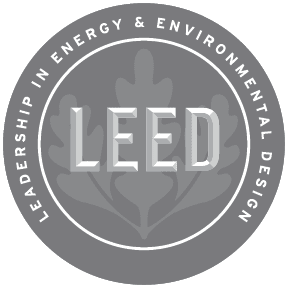LEED (Leadership in Energy and Environmental Design) is a globally recognised green building certification program developed by the U.S. Green Building Council (USGBC). It assesses and certifies the sustainability and environmental performance of buildings and communities. LEED certification takes into account various aspects, including energy efficiency, water conservation, materials selection, and indoor environmental quality. Focuses on evaluating and promoting sustainable and environmentally responsible building practices.
Assessment Categories:
- LEED assesses various categories, including sustainable site development, water efficiency, energy efficiency, materials and resources, indoor environmental quality, and innovation in design.
- Each category has specific prerequisites and credits for achieving certification.
Certification Levels:
- LEED offers several levels of certification: Certified, Silver, Gold, and Platinum.
- Certification level depends on the total points earned, with higher levels indicating greater sustainability and environmental performance.
Applicability:
- LEED certification can be pursued for a wide range of building types, including commercial, residential, industrial, and public buildings.
- It can be applied to both new construction and existing buildings through LEED for Building Operations and Maintenance (LEED O+M).
International Reach:
- While originating in the United States, LEED has gained global recognition and has been adapted for use in many countries.
- Different regions may have their own adaptations to align with local building practices and regulations.
Assessment Process:
- Projects undergo a comprehensive assessment process involving design, construction, and post-construction phases.
- LEED Accredited Professionals and Green Raters assess and verify project compliance.
- Points are awarded based on compliance with LEED criteria, and a minimum number of points are required for certification.
Benefits:
- LEED-certified buildings are known for their resource efficiency, reduced environmental impact, and health-promoting features.
- Lower operating costs through energy and water savings.
- Enhanced occupant health and comfort through improved indoor air quality and daylighting.
- Higher property value and marketability.
- Demonstrates commitment to sustainability and environmental responsibility.
Continuous Improvement:
- LEED standards are regularly updated to incorporate the latest advancements in sustainable building practices and to address evolving environmental priorities.
Innovation and Design:
- LEED encourages innovative and sustainable design and construction practices through its innovation in design credits.
Sustainability Goals:
- LEED aligns with global sustainability goals, such as reducing carbon emissions, conserving water resources, and promoting green building practices
Community and Advocacy:
- USGBC and LEED are involved in sustainability advocacy efforts and promote the adoption of green building practices globally.

